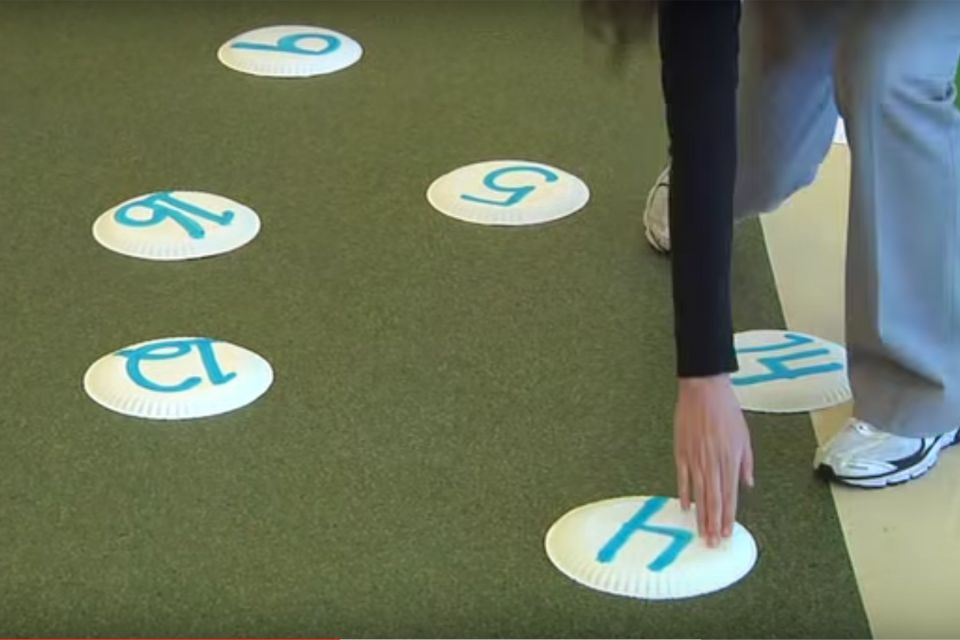By far the most popular resource on ThePhysicalEducator.com, our standards-based games database will provide you with great content for your physical education program.

Blow up turrets and mines in this top-down shooter. Avoiding getting hit too much or you're dead. Enjoy playing Follow The Leader! All players must follow the lines on the gym. You can travel in any direction on the line, but players are not allowed to jump to another line. To get to another line players must continue until they come to an intersection with another line and then they can follow that line.
Teams score when they move an object into the opposing team's zone and successfully attack that team's goal or target area. Tactical problems related to invasion games include maintaining possession, attacking and/or defending a goal, winning the ball, etc. Examples of invasion games include soccer, basketball, football, rugby and hockey.
Playing games and participating in activities gives a child an opportunity to share, laugh and have fun. Sharing the experience with family and friends only enhances it. While a child may consider winning as the ultimate objective, it's important to point out that the real objective may have absolutely nothing to do with winning, but how the. 23 October 2015.
Players score when they successfully throw or strike an object closer to a target than their opponents were able to. Tactical problems related to target games include shot selection, judging distance, preventing points, and protecting the shot. Examples of target games include golf, archery, bowling, bocce ball, and billiards.


Players/teams score by hitting an object into a court space in such a way that the opposing player/team cannot hit it back within the allowed amount of bounces. Tactical problems related to net and wall games include setting up an attack, creating space on offense, reducing space on defense, etc. Examples of net and wall games include tennis, volleyball, squash and badminton.
Players on the batting team strike an object and attempt to run between two points before the fielding team can recuperate the object. The teams exchange roles after a certain amount of hits or after a certain amount of players have been retired from the game. Tactical problems related to striking and fielding games include striking the object to an open space, reducing space on defence, scoring points and retiring players from the game. Examples of striking and fielding games include baseball, cricket, softball and kickball.
Traditionally known as Tag Games, chasing and fleeing games involve players moving within a playing area while attempting to reach others and/or avoid being reached themselves. Tactical problems include evading opponents, reaching opponents, trapping and sending/reacting to misleading signals. Bobby mac deluxe carseat owners manual.
Fundamental movement skills are the building blocks of physical literacy. These skills are usually broken down into three overarching categories: locomotor (e.g. running, skipping, galloping), non-locomotor (e.g. balances and shapes), and manipulative (e.g. throwing, catching, kicking). The following games will help your students develop their FMS skills in fun, active learning environments!
Players need to work together to find solutions to group/individual challenges. Cooperation games put an emphasis on team building, communication and trust. Tactical problems relating to cooperation games include communication, cooperation, teamwork, trust, and problem-solving.

Blow up turrets and mines in this top-down shooter. Avoiding getting hit too much or you're dead. Enjoy playing Follow The Leader! All players must follow the lines on the gym. You can travel in any direction on the line, but players are not allowed to jump to another line. To get to another line players must continue until they come to an intersection with another line and then they can follow that line.
Teams score when they move an object into the opposing team's zone and successfully attack that team's goal or target area. Tactical problems related to invasion games include maintaining possession, attacking and/or defending a goal, winning the ball, etc. Examples of invasion games include soccer, basketball, football, rugby and hockey.
Playing games and participating in activities gives a child an opportunity to share, laugh and have fun. Sharing the experience with family and friends only enhances it. While a child may consider winning as the ultimate objective, it's important to point out that the real objective may have absolutely nothing to do with winning, but how the. 23 October 2015.
Players score when they successfully throw or strike an object closer to a target than their opponents were able to. Tactical problems related to target games include shot selection, judging distance, preventing points, and protecting the shot. Examples of target games include golf, archery, bowling, bocce ball, and billiards.
Players/teams score by hitting an object into a court space in such a way that the opposing player/team cannot hit it back within the allowed amount of bounces. Tactical problems related to net and wall games include setting up an attack, creating space on offense, reducing space on defense, etc. Examples of net and wall games include tennis, volleyball, squash and badminton.
Players on the batting team strike an object and attempt to run between two points before the fielding team can recuperate the object. The teams exchange roles after a certain amount of hits or after a certain amount of players have been retired from the game. Tactical problems related to striking and fielding games include striking the object to an open space, reducing space on defence, scoring points and retiring players from the game. Examples of striking and fielding games include baseball, cricket, softball and kickball.
Traditionally known as Tag Games, chasing and fleeing games involve players moving within a playing area while attempting to reach others and/or avoid being reached themselves. Tactical problems include evading opponents, reaching opponents, trapping and sending/reacting to misleading signals. Bobby mac deluxe carseat owners manual.
Fundamental movement skills are the building blocks of physical literacy. These skills are usually broken down into three overarching categories: locomotor (e.g. running, skipping, galloping), non-locomotor (e.g. balances and shapes), and manipulative (e.g. throwing, catching, kicking). The following games will help your students develop their FMS skills in fun, active learning environments!
Players need to work together to find solutions to group/individual challenges. Cooperation games put an emphasis on team building, communication and trust. Tactical problems relating to cooperation games include communication, cooperation, teamwork, trust, and problem-solving.
Follow The Leaderelementary P.e. Games Youtube
Teaching students about health and fitness concepts in fun and engaging ways can be challenging. The following games will help your students develop their understanding of health and fitness concepts through play. Examples of these concepts include heart rate zones, nutrition facts, and fitness components.
